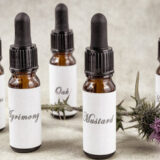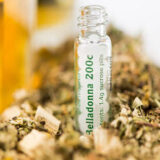How To Make Craft Beer At Home?
 Do you like beer? Well, surely you have always thought about being able to make your own homemade beer. Although it may seem to be hard, it’s the opposite, it is easier than it seems.
Do you like beer? Well, surely you have always thought about being able to make your own homemade beer. Although it may seem to be hard, it’s the opposite, it is easier than it seems.
As long as you have the desire and all the material and ingredients are available near you. If you really want to try your luck and see how your own beer looks, in this article we will know how to brew craft beer at home? with all the steps.
What do I need to make craft beer?
The first thing you have to have is a craft beer kit, it will be easy for you to make it without problems. Or in the market there are many options to choose from, just go online and you will surely be able to find the kit that fits your budget and the production you want to carry out.
Now we will know about the ingredients you will require to make 15 liters of homemade beer. If you intend to make fewer liters, you just have to reduce the ingredients to the number that interests you.
- 30 liters of water without chlorine
- 25 grams of hops
- 4.5 kilos of barley malt
- Sugar
- A packet of yeast to make beer
Steps to make beer at home
1. Maceration
It is the first step in this we must take barley malt. Begin with, we put the barley malt in a pot/vessel of hot water and put it at a temperature of 70 degrees. Remember, for every kilo of barley malt you will have to use three liters of water. While it takes the temperature, stir little by little as to avoid that it can create lumps.
2. Boil
After obtaining the mixture properly, it is time to boil for an hour. While this process is taking place you will have to add the hops little by little to the solution. The goal is to add the bitter taste that makes the beer have its distinctive flavor. After boiling you will have to stir to get the residues to settle down to the bottom of the vessel.
3. Cooled
Now is the time to transfer the beer or the boiled wort to a fermenter, that you will have if you have a good kit. The goal is to get the temperature down as quickly as possible. This process is simple and can be done through different measures.
A homemade way to quickly lower the temperature is to put it in ice, without the water or ice having direct contact with the liquid. Another option may be to pass the beer through an ice-cooled copper pipe, but not everyone has this type of pipe, hence the first option is usually the most used.
4. Fermentation
This step consists of putting the mixture in a container so that it can ferment. Many kits include the container for fermentation, but sometimes it can be put in a jerrycan of water.
Yeast is added to the container. The goal is to convert the sugar in the wort into alcohol. Do not forget to put an air outlet in the container, but no air can enter this outlet. This is usually known under the name of air trap.
To give you the idea, fermentation usually lasts 10 days to 15 days or so. To achieve good results, It is recommended to put the container at a temperature of about 19 degrees and in a dark place. After that time you will get the beer without gas.
5. Ripening and bottling
Now that you have the beer without gas, you must transfer it to another container to eliminate any bed of yeast. This process must be done cold to get better results while you will have to let it rest again for about a week.
In this process you will also have to carry out natural carbonation. To achieve this you will have to make a syrup. You can do it with 7 grams of sugar per liter. Put that sugar with water (little amount) and put it to boil for a few minutes.
When you have it ready, you add it to the solution and mix it, avoiding contact with air as much as possible to avoid oxidation. Now you must fill the bottles with the beer and cover them to rest, for about ten days.
After this time the beer will surely be ready, although you can leave one more day to be sure. If you want to know if the beer is ready, open a bottle and if gas comes out when pouring it, this means that it is ready.
Remember to store the bottles at room temperature so that they settle properly. And if the first batch doesn’t go well, try again. Surely the second you will succeed.
























